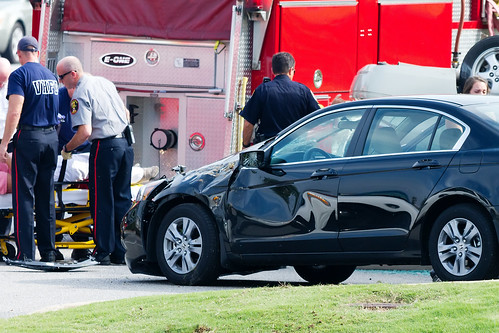Nurture Yourself and Your Children Through a Car Accident
Few life events frighten mothers and children as much as traffic accidents. Unexpected, quick and traumatic, even minor accidents make moms and kids feel vulnerable, powerless and helpless. In the immediate aftermath of a traffic accident, however, you must summon the very best of your parenting skills and wisdom, doing everything in your power to make certain you and your children are safe and receive proper care. Marshall all your patience and courage to get through the rough stuff, promising yourself the luxury of falling apart later. Take three significant steps:
• Stay calm! Honor your responsibilities, and care for yourself first. You know your children will mirror or mimic your reaction to the accident. If you panic, they will panic; and your shared panic will exacerbate the difficulty of everything about the accident. Therefore, first and foremost, do everything you must to stay cool, calm, clear-headed, and composed. As the law requires, immediately but carefully move your car out of the flow of traffic, call emergency services and the police, and call your insurance company. If one of the best companies insures you, a claims representative may talk you through the whole situation until help arrives. If you are hurt, take care of your own needs first, because you cannot effectively care for your children if you are seriously impaired. Do not , however, get so caught-up in discussing the accident with your insurance rep or caring for your own wounds that you get distracted from the children, who require your undivided attention after you are stabilized. Briefly reassure the children that everything will be fine, and then focus on asking questions about how they feel.
• Do some serious “mommy triage.” As you assess the seriousness and extent of your children’s injuries, progress from youngest child to oldest, and follow a mental checklist that progresses from most serious injury to least serious. Check first for indications of head injury and the possibility of concussion. If younger children were belted securely in their car seats, they have only minimal risk of head trauma, but check them very carefully anyway. See if the straps have left marks on their skin, because those marks could indicate the possibility of soft-tissue injuries. Also ask if their tummies hurt, because the big safety buckles on car seats can sometimes injure abdominal organs or muscles.
If slightly older children were strapped into seat-belts, they may or may not have triggered the built-in restraint systems. Therefore, you have to check them out a little more carefully and with more aggressive questions. Check for concussion and soft tissue injuries by asking if they bumped their heads or if it hurts when they rotate their heads and shoulders. Ask them if they feel soreness in their stomachs or their backs. Because soft-tissue injuries take 24 to 48 hours to develop, keep checking the kids for signs of injury for at least three days after the accident. Do not trigger their distress by asking too many questions, though; instead, monitor their behavior and their sleep patterns. If they play, east, and nap like always, they’re fine.
After you assess the kids’ physical injuries, look for signs of extreme stress. Of course, the kids will feel shaken and scared, and you should encourage them to release as much of their stress as they can in tears. Feel free to release a few of your own tears, too. Because children show amazing resilience, they may calm down and get on with their regular play and learning almost as if nothing had happened. Do not fear that this quick return to normal is some sneaky coping mechanism; it really does mean the kids are fine. If, on the other hand, the children seem exceptionally needy, fearful or apprehensive, talk with them about their feelings and decide whether or not they should see a physician or counselor.
• Do not hesitate to get professional help. As always, your maternal instinct serves as the best barometer of the situation’s seriousness. If you harbor the least little doubt about the children’s physical or emotional health, get a physician’s or psychologist’s help. Your regular health insurance ought to cover these examinations; or, in most cases, car insurance will cover them—either your own or the insurance that covers the driver responsible for the accident. Do not allow worry about cost to prevent you from seeking the care your children need.
Lisa Tulley is a stay at home blogger and writes for www.Kanetix.ca, a site where you can get quotes for kanetix auto insurance. She knows this site can help you find your cheapest car insurance rates!


















0 comments:
Post a Comment